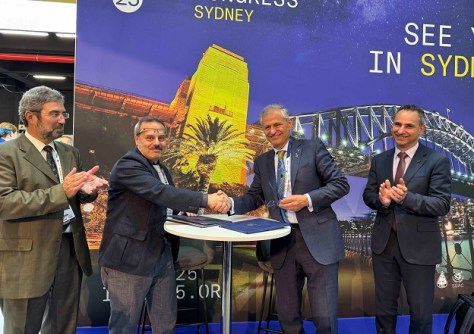
Welcome to our new semi-regular feature, Spatial Snippets, in which we’ll be bringing you a round-up of all the bits and pieces of geospatial news that didn’t make it into our normal daily and weekly coverage.
Here are our snippets for this week:
NSW’s DCS Spatial Services has a released a catalogue of the products and services for which it is responsible, from foundational datasets to digital twin initiatives, and spatial data portals to topographic maps.
Western Australia’s Landgate has launched Place Names Maali, a reconciliation, truth telling, and Aboriginal language revival project delivered in collaboration with the City of Swan and Moodjar. The project includes an interactive online Aboriginal Place Names map containing the decoded names and pronunciations of 18 geographical locations within the City of Swan.
Australia’s SmartSat CRC and Greece’s Hellenic Space Centre signed a memorandum of understanding at the International Astronautical Congress, covering collaboration in four areas of endeavour: microsatellites, Earth observation, space science and academic collaborations, and commercial networking.
The latest iteration of RINEX, version 4.02, has been released, with documentation available on the International GNSS Service (IGS) website. According to the IGS, version 4.02 “is an upgrade of the format document that introduces the pico-second resolution to the observations time tagging, as well as new navigation messages for NavIC L1 and GLONASS L1 and L3 CDMA. In addition, navigation messages subtypes have been introduced, to support dual ION models available for the QZSS and NavIC systems”.
Vancouver-based EarthDaily Analytics (EDA) announced its acquisition of Descartes Labs, establishing a vertically integrated market leader in Earth observation and data analytics. EDA is planning to launch a fleet of satellites, the EarthDaily Constellation, in 2025.
u-blox has announced an extension of the reach of its PointPerfect GNSS correction service by adding the Radio Technical Commission for Maritime Services (RTCM) data format standard, opening the service to use with all GNSS and real- time kinematics (RTK) receiver hardware. Previously, PointPerfect had exclusively delivered the correction data using the SPARTN data format.
The UK’s Geospatial Commission has appointed the Ordnance Survey to operate the National Underground Asset Register, with the service transitioning to public beta in the northern spring of 2025. NUAR is described as an emerging digital service that provides instant access to a map of underground assets (i.e. pipes and cables) in England, Wales and Northern Ireland.
Esri has announced the publication of the third edition of its book, Designing Better Maps: A Guide for GIS Users. The work has more than 400 full-colour illustrations, and includes expert guidance on planning; using basemaps, scale and time; applying type and labels, including colour; customising symbols; publishing and sharing maps, and more.
Presenter applications are now open for the Disaster & Emergency Management Conference, which is held annually on the Gold Coast. The theme for the 2025 conference is ‘Adapting to a Changing World: Preparing for Tomorrow’s Disasters Today’.
On the topic of conferences, don’t forget that we keep a full list of Australian and international conferences, meetings, symposia and exhibitions listed on our Spatial Source events page. Is your event not listed? — let us know.
Do you have a Spatial Snippet to share? Let us know by sending us an email.
And make sure you don’t miss out any geospatial news from across Australia and around the world — subscribe to our free weekly Spatial Source newsletter, sent out every Wednesday morning.







